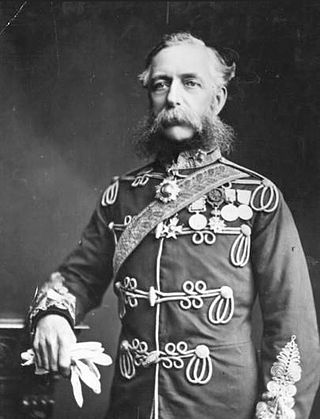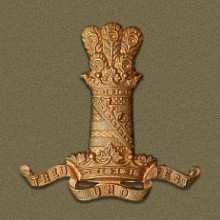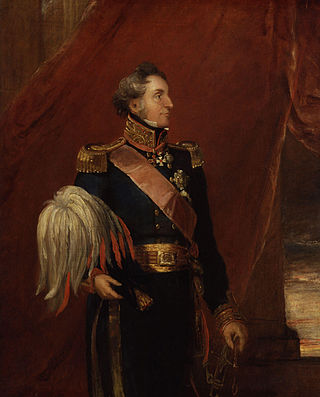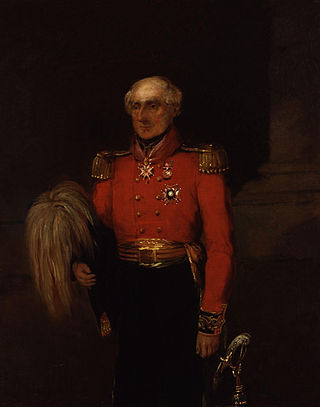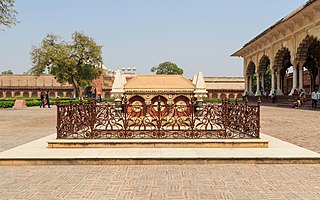Civilian career
On 31 May 1841 Tuckett, backed up by two friends from the army, assaulted without provocation a train passenger at Greenwich. He was arrested when the train arrived at its London destination but was acquitted of assault on the passenger (and of assaulting the police officer who took him into custody) because the original offence, although proved, had taken place beyond the City of London court's jurisdiction. [14]
Actor

Tuckett involved himself in many ventures after leaving the Army, experiencing, as an annual news review recounted: "much of life, as a merchant, agent, actor, and bankrupt". [15] Because of his duelling injury he walked with a limp for the rest of his life, but he recovered sufficiently to become a player with a company of actors touring in Britain and Ireland, drawing on his experience of amateur theatre in India. Reactions to his stage appearances were often critical but, by capitalising on his celebrity from the duel, Tuckett gained backing for a production of Henry IV Part 1 , in which he played Sir John Falstaff. [16] His performance in the role at London's Lyceum Theatre, opening on 12 January 1844, gained appreciative reviews, although the production itself was criticised for its sparse scenery and indifferent supporting cast—some were amateur players. [17] [18] A critic noted that the actor's naturally stout physique rendered unnecessary the heavy padding customarily needed to portray the old, fat knight. [19] The final performance, in what was considered a very short run in front of "empty benches", [20] was a benefit performance for Tuckett on 12 February 1844. [21]
Tuckett's interpretation of Rolando in The Honey Moon , mounted at the Lyceum in the weeks following, failed to impress. [22] The Theatre Royal, Bristol, put out a playbill for a benefit performance marking his last stage appearance, again as Falstaff, on 8 March 1844. [23] Further "last appearances" followed: for example "[…]his Falstaff was a failure" at the Theatre Royal, Edinburgh, on 11 May 1844. [24] In May 1844 he expanded his repertoire to include Jack Rover in Wild Oats in Glasgow and an "audacious" appearance as Charles Goldfinch in The Road To Ruin at the Theatre Royal, Brighton, playing in repertory with Henry, in August 1844. [25] In November 1844 Tuckett took the lead role in Don Cæsar de Bazan by Gilbert à Beckett at a small theatre in Abbey Street, Dublin. [26]
By June 1847 an actors' directory noted that Tuckett had moved to America, continuing his stage career in New York. [27] On 26 October 1847 at the Arch Street Theatre, Philadelphia, he appeared as Jeremy Diddler in James Kenney's 1803 farce Raising the Wind. [28]
Mercenary soldier
In 1846 in Ireland Tuckett was commissioned to raise a private mercenary force, led by other half-pay officers, to restore Juan José Flores, overthrown president of Ecuador, to power. Tuckett revealed the plot to the authorities and when Colonel Richard Wright, Flores's representative in London, was arrested as organiser, Tuckett gave evidence against him. After the trial he was subject to a harsh reception from the other conspirators. [15]
Bankrupt
Even before Tuckett's regiment relocated to England, with its far higher living expenses than he experienced in India, Tuckett was at risk of being declared bankrupt. [29] In January 1839, seeking to repair his finances in England, he became a promoter of the West Kent Gas-light, Coke and Coal Company of Gravesend, and in August of that year of a newly formed bank: the British Agriculturists' and Graziers' Joint Stock Banking Company, with an office near the Smithfield cattle market in London. [30] [31] He joined a partnership of "Merchants and East India Army and Colonial Agents", with offices in Poultry, London, [32] but this was dissolved on 28 April 1842. [33] All his ventures failed, and he was declared bankrupt on 2 December 1842. [34]
Insurance actuary
After Tuckett's theatrical career in Philadelphia ended, he set up a business in the city offering actuarial advice to life insurance companies there, adopting US nationality on 20 December 1852. [35] In 1851 he published the pamphlet Practical Remarks on the Present State of Life Insurance in the United States. [36] In 1852 the first issue of Tuckett's Monthly Insurance Journal, Health and Friendly Societies' Monitor appeared, which he continued to publish until his death on 2 January 1854. [37]

